TABLE OF CONTENTS
Foreward
About model name
For safe operation
For safe operation
Precautions in installation
How to read this operation manual
Structure of this operation manual
Features of the device
Chapter 1 SET-UP
Installation site
Effective cutting area
Checking the accessories
Configuration and Function
Main unit
Head
Operation panel
Connecting the Cables
Connecting the signal wire cable for the blower
Connecting the interface cable
Connecting the power cable
Turning the power on/off
Turning the power on
Turning the power off
Emergency stop
How to stop the device in an emergency
How to reset the emergency stop
LOCAL/REMOTE Modes
LOCAL mode and the indication on the LCD
REMOTE mode and the indications on the LCD
Matching the functions of the device to the specifications of the computer
Setting communication conditions [INTERFACE]
Rendering the set values on the personal computer effective [MODE SET] > [CMD SW]
Setting the response value with respect to the valid area [MODE SET] > [OH UNIT]
Setting the command origin [MODE SET] > [ORIGIN]
Setting the resolution (GDP) [MODE SET] > [GDP]
Matching the specifications on the plotter's side
Setting for automatic head retract [AUTO VIEW]
Auto-OFF feature of the vacuum
Auto-OFF/Panel-OFF[MODE SET]>[VACUUM]
CHAPTER 2 BASIC OPERATION
Basic operation on the LOCAL menu
LOCAL menu
MODE SET menu
Basic operation on the LOCAL menu
Basic operation flow chart
Moving the head
Moving the head by "VIEW" function
Fixing a work
Fixing a work that is comparatively light in weight
Fixing heavy-weight packing etc.
Adjusting the blade and the pen
Cutter holders 4N and 10N (for unit C)
Cutter holder 2N (for unit B)
Reciprocal cutter holder (for unit B)
Swivel cutter
Attaching the tools
Attaching the pen and the swivel blade
Attaching the tangential cutter
Attaching the reciprocal cutter (cutter holder)
Installing the crease roller
Adjusting the height of the head
Attaching the work holder
Selecting a tool [TOOL SELECT]
Setting cutting conditions [CONDITION]
Setting items
Set values
Checking cutting conditions [TEST CUT]
Checking the status of tools
Checking the status of tools
Setting the cutting area [CUT AREA]
Setting the origin (Origin for Plotting)
Interruption of Processing (Plotting, Cutting or Creasing)
Interruption of processing [DATA CLEAR]
CHAPTER 3 WHEN ABNORMAL CONDITIONS ARE ENCOUNTERED
If any of the below-stated phenomena takes place
Cutting depth is insufficient [CONDITION] > [PRESS CORRECT]
The work remains uncut at the cutting start and end [CONDITION] > [START/END CORRECT]
[TOOL ADJUST] > [CIRCLE q-ADJUST]
Corrugated board is cut out at flutes though creasing is performed [CONDITION] > [PRESS (Y)]
Tools are not aligned to each other [TOOL SELECT]
Flowchart of checking and adjusting procedures
General explanation of the adjustment of tools
Adjustment of the cutter
Adjustment of the roller
How to adjust the tools
If there is a sign of failure
The device not at all actuates even when the power to the device is turned on
The device fails to actuate even when data is transmitted from CAD
Error arises when transmitting data
The tool drags on the sheet of paper
Dotted lines or blurred lines are plotted
There is no reciprocal vibration
Troubles for which error messages are given on the LCD
Errors that can be corrected by users
Errors that cannot be corrected by users
CHAPTER 4 APPLICATION FUNCTIONS
Assignment of pen numbers [MODE SET] > [PEN ASIGN]
Setting the number cut function [MODE SET] > [MULTI-PASS]
Setting the ONE-stroke cutting [MODE SET] > [ONE STROKE]
Setting the direction of rotation for the coordinate axis [MODE SET] > [ROTATE]
Setting the cutter stroke [MODE SET] > [Z STROKE]
Setting the unit to be used for indication [MODE SET] > [UNIT]
Setting the DUMMY CUT operation of the SWIVEL BLADE [MODE SET] > [DUMMY CUT]
Alignment of mechanical axes to ruled lines printed [AXIS ALIGN]
Expand the cutting area [EXPANDS]
CHAPTER 5 REGISTER MARK DETECT FUNCTION
Setting of register mark detect
How to display the register mark setting on LCD
Precautions in preparing data with register mark
Size of the square mark
Size of the register mark
The area where register marks and designs can be arranged
No-plotting area around the register marks
The size of, and the distance between, register marks
Color of Register mark
Register mark Blurred
Setting of register mark detect operation
Precautions on register mark detection
How to display the register mark setting on LCD
Settings for detect
Continuous cut with Register mark
Initialize the register mark scale adjustment [SC.CLR]
CHAPTER 6 Self-test
Confirmation of cutting quality only by the single unit of the device [SELF TEST]
Cutting quality * / Sample *** / Circle cutting R = ***
Dump test [SELF TEST]
Executing the data dump
Execution of the parameter dump
APPENDIX
A. Replacing the blade tips
Tangential cutter blade
Swivel blade
B. Local menu structure
RC-head model
RT-head model
R-head model
C. Output samples
Cutting quality 1
Cutting quality 2
ASCII dump list
Sample (coated)
Sample (E corrugated)
Sample (B corrugated)
Circle cutting R = 3/5/10/20/50/100
Parameter dump list
D. Specifications
Basic specifications
Specifications for interface specifications
E. Maintenance
Cutting panel surface
Unit B
Cover
F. OPTIONAL ACCESSORIES
Swivel cutter components
Reciprocal Relationships
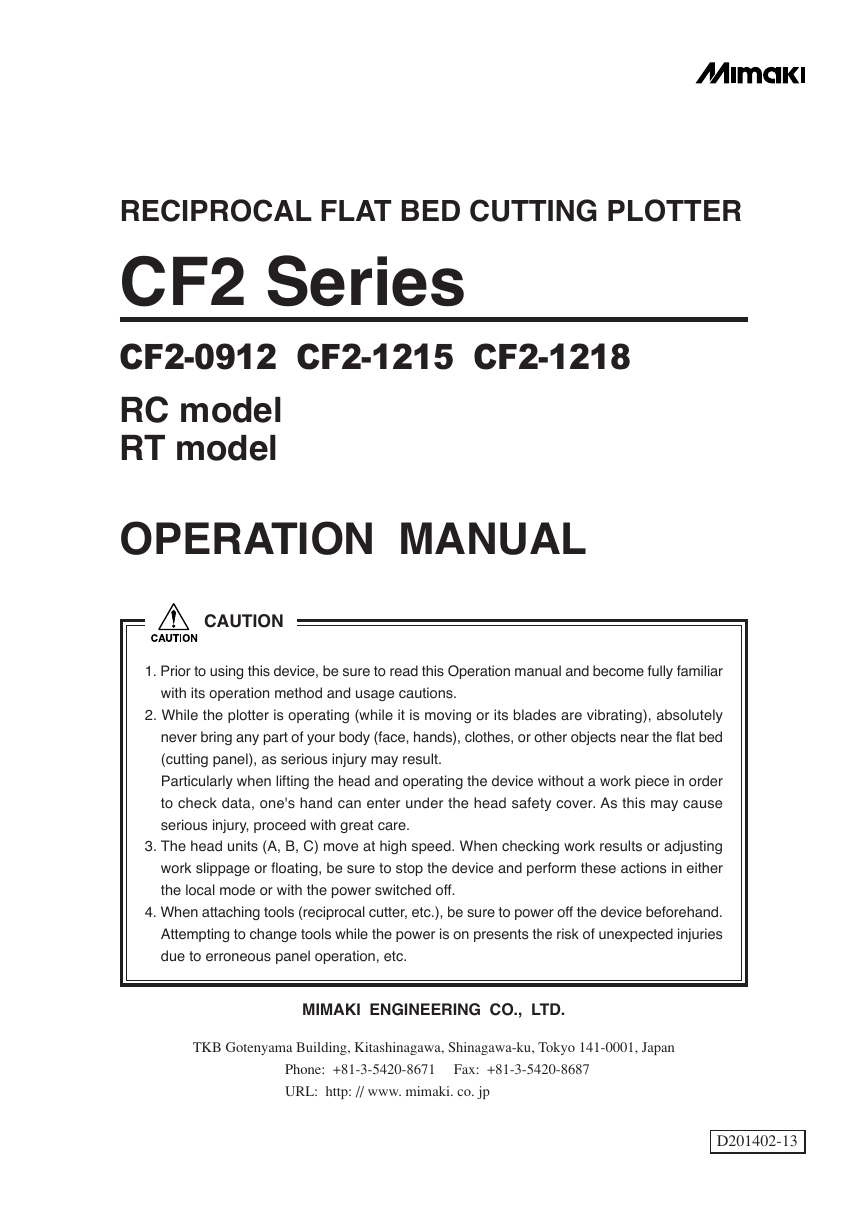

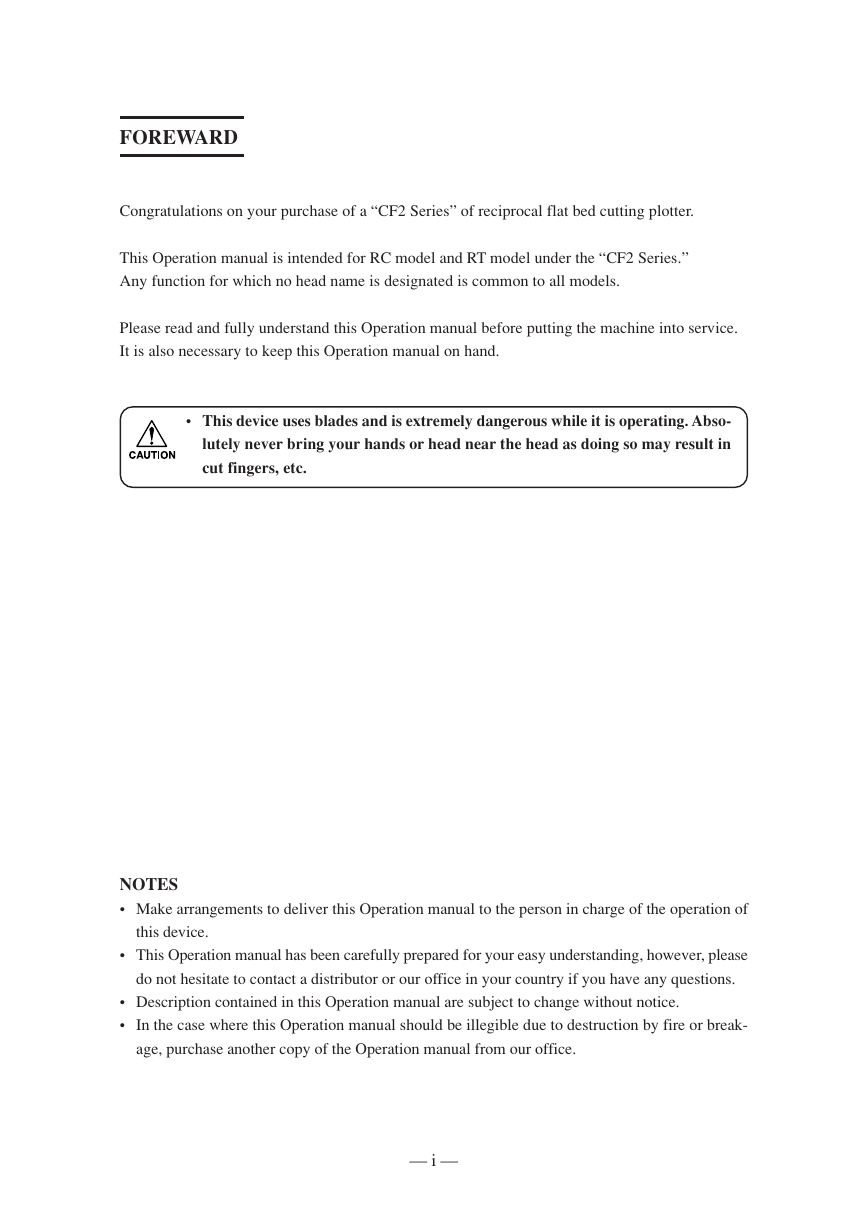
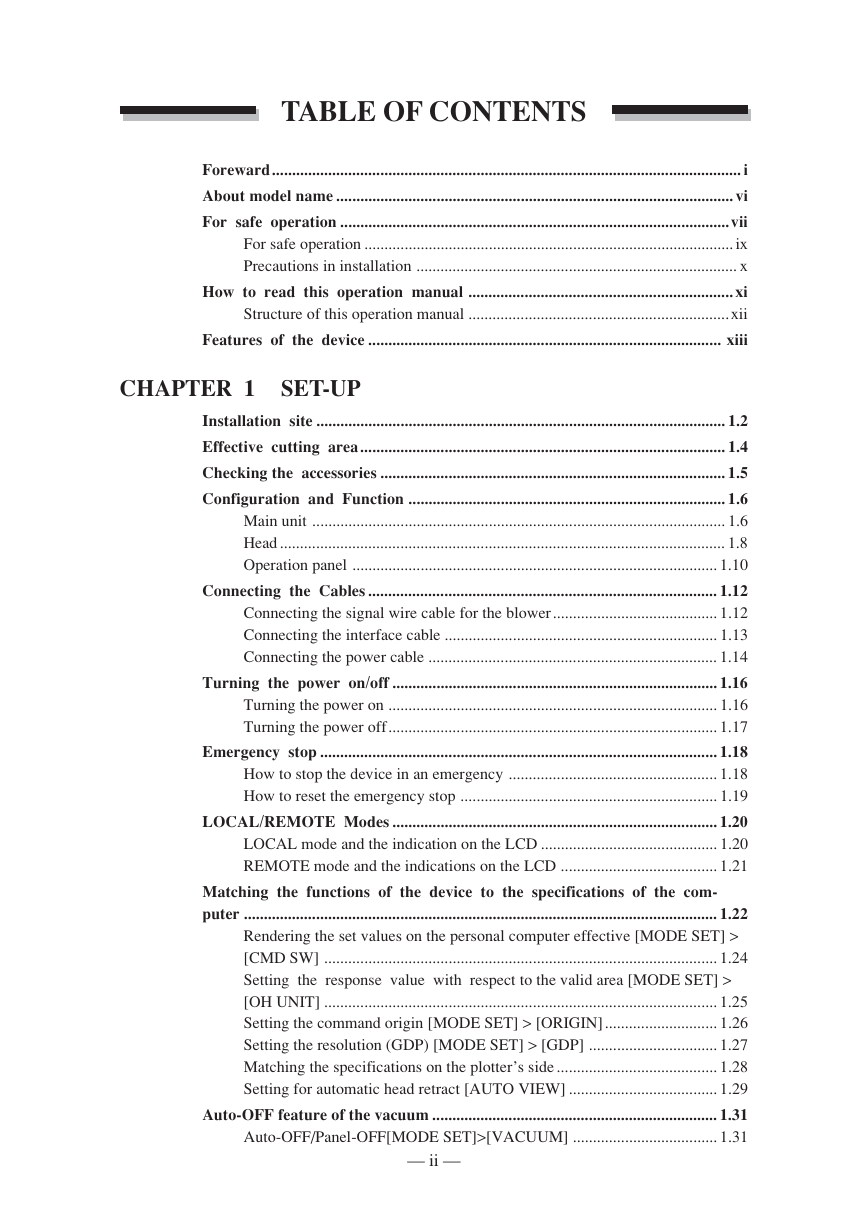
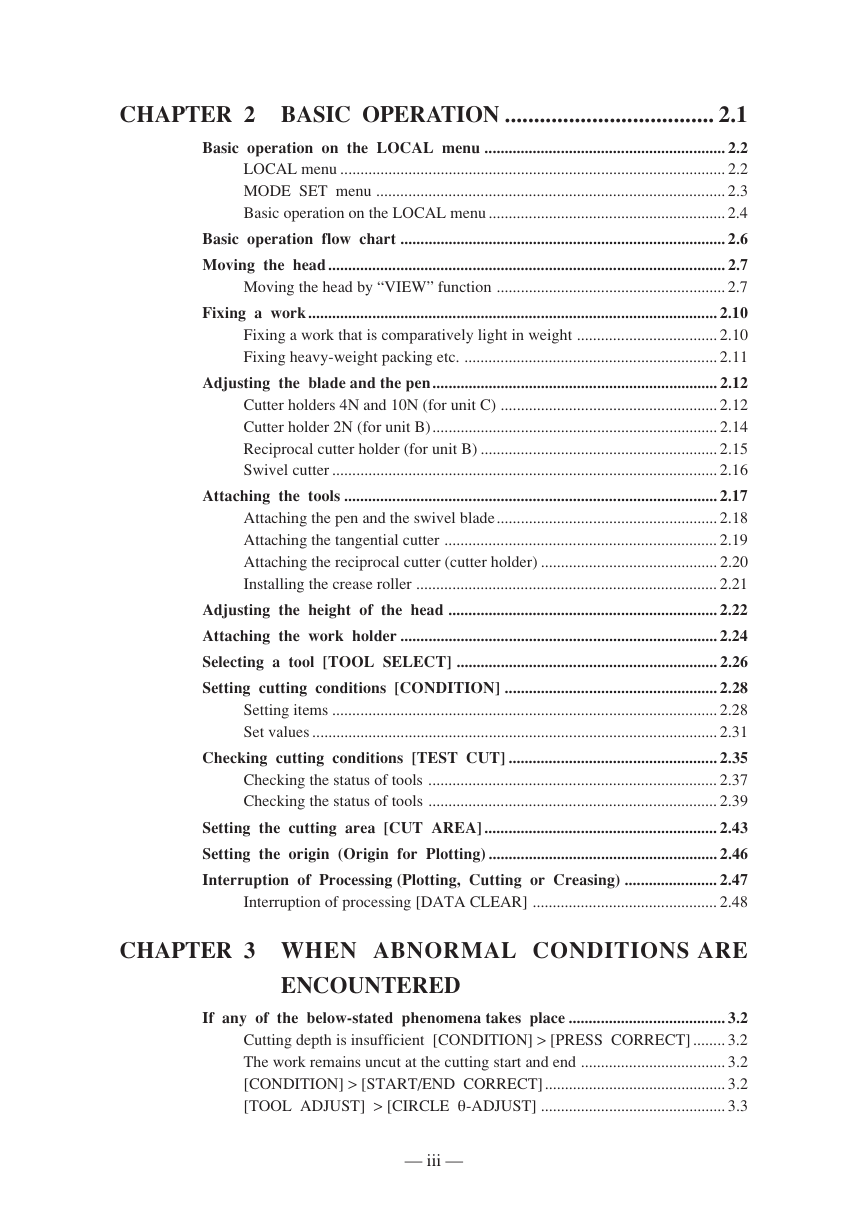
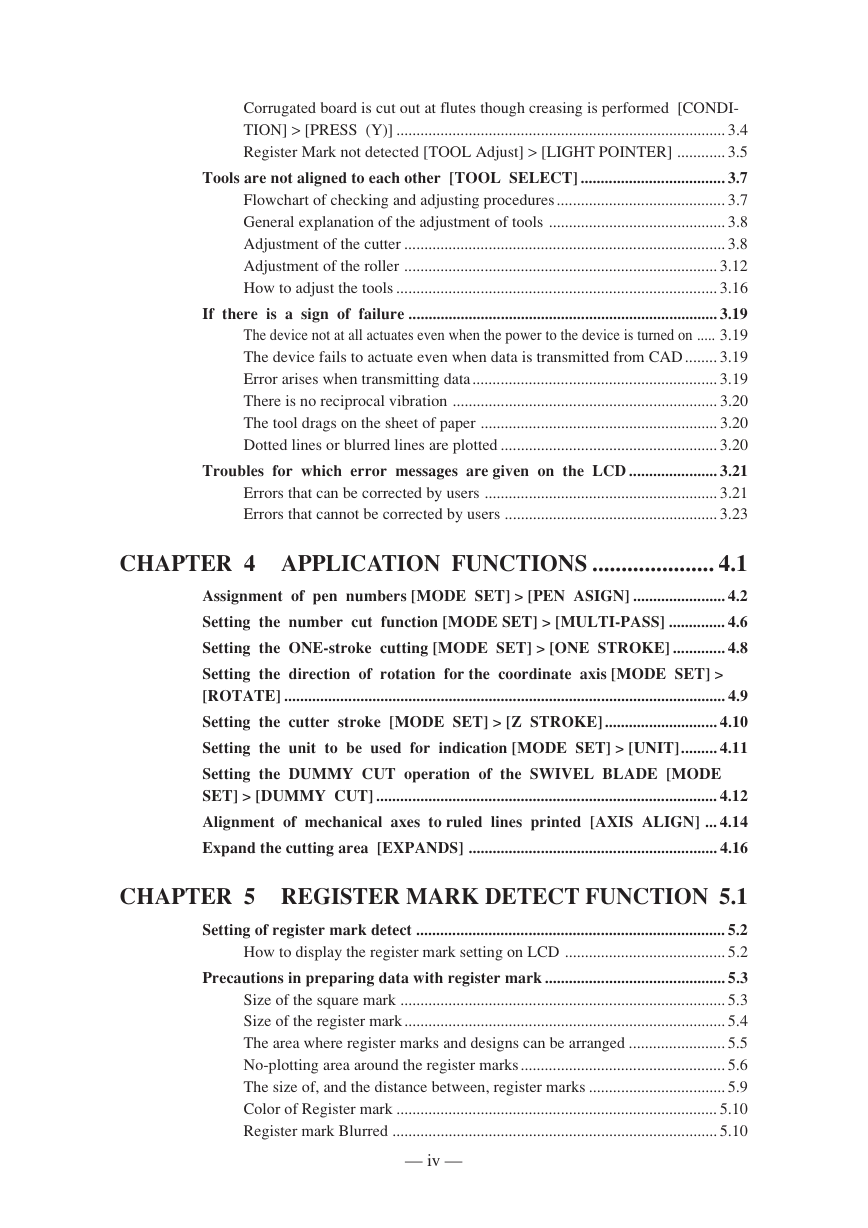
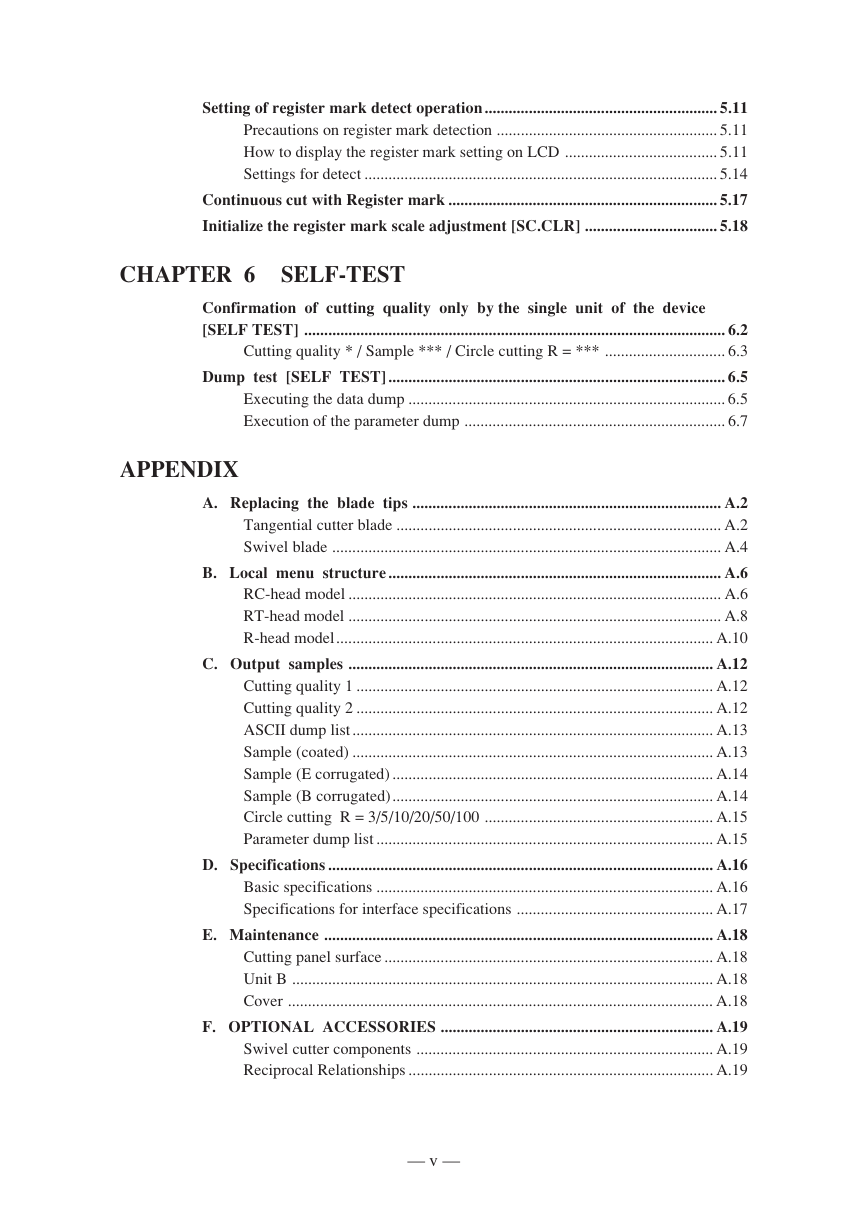









 2023年江西萍乡中考道德与法治真题及答案.doc
2023年江西萍乡中考道德与法治真题及答案.doc 2012年重庆南川中考生物真题及答案.doc
2012年重庆南川中考生物真题及答案.doc 2013年江西师范大学地理学综合及文艺理论基础考研真题.doc
2013年江西师范大学地理学综合及文艺理论基础考研真题.doc 2020年四川甘孜小升初语文真题及答案I卷.doc
2020年四川甘孜小升初语文真题及答案I卷.doc 2020年注册岩土工程师专业基础考试真题及答案.doc
2020年注册岩土工程师专业基础考试真题及答案.doc 2023-2024学年福建省厦门市九年级上学期数学月考试题及答案.doc
2023-2024学年福建省厦门市九年级上学期数学月考试题及答案.doc 2021-2022学年辽宁省沈阳市大东区九年级上学期语文期末试题及答案.doc
2021-2022学年辽宁省沈阳市大东区九年级上学期语文期末试题及答案.doc 2022-2023学年北京东城区初三第一学期物理期末试卷及答案.doc
2022-2023学年北京东城区初三第一学期物理期末试卷及答案.doc 2018上半年江西教师资格初中地理学科知识与教学能力真题及答案.doc
2018上半年江西教师资格初中地理学科知识与教学能力真题及答案.doc 2012年河北国家公务员申论考试真题及答案-省级.doc
2012年河北国家公务员申论考试真题及答案-省级.doc 2020-2021学年江苏省扬州市江都区邵樊片九年级上学期数学第一次质量检测试题及答案.doc
2020-2021学年江苏省扬州市江都区邵樊片九年级上学期数学第一次质量检测试题及答案.doc 2022下半年黑龙江教师资格证中学综合素质真题及答案.doc
2022下半年黑龙江教师资格证中学综合素质真题及答案.doc